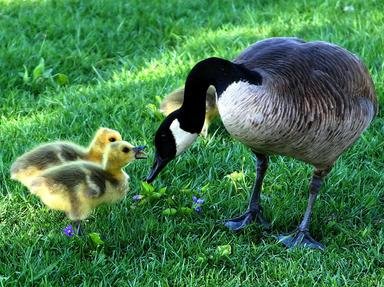Quiz Answer Key and Fun Facts
1. Feline with long ear tufts
2. The largest of the deer family
3. Also known as a skunk bear
4. Largest Canadian wild feline
5. Spends a lot of time in rivers
6. Both male and female have antlers
7. Tree dwelling member of the mustelid family
8. Black headed member of the auk family
9. "Engineer" who can build dams
10. Member of the auk family with a brightly coloured beak
Source: Author
ClaudiaCat
This quiz was reviewed by FunTrivia editor
rossian before going online.
Any errors found in FunTrivia content are routinely corrected through our feedback system.


